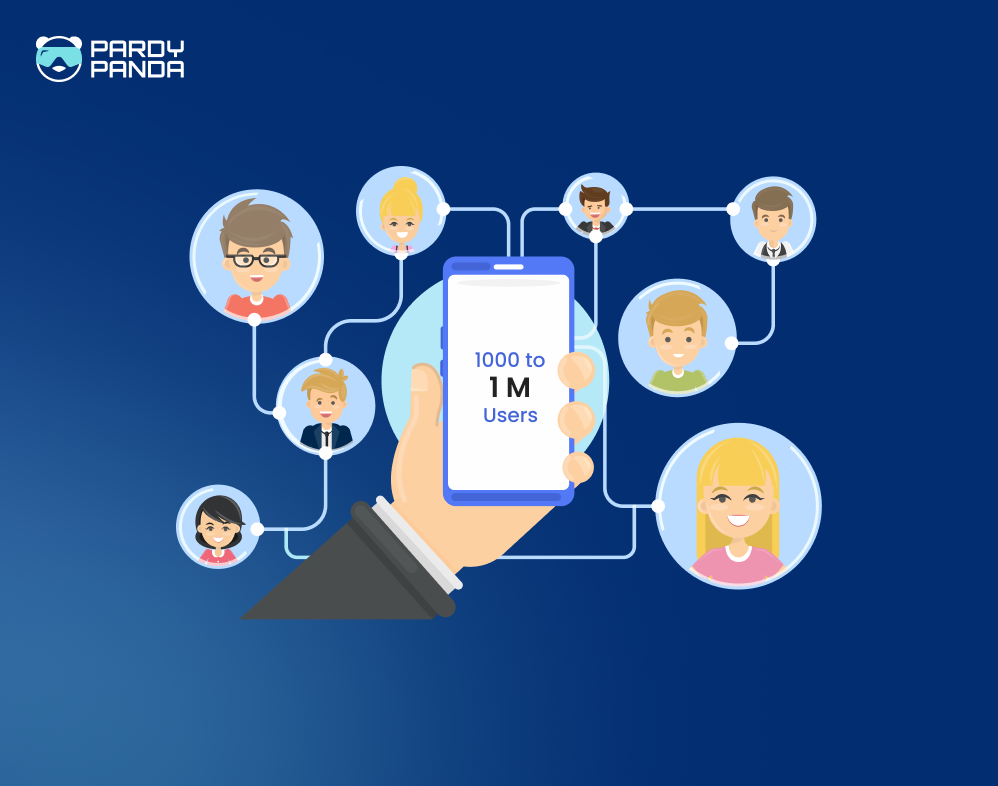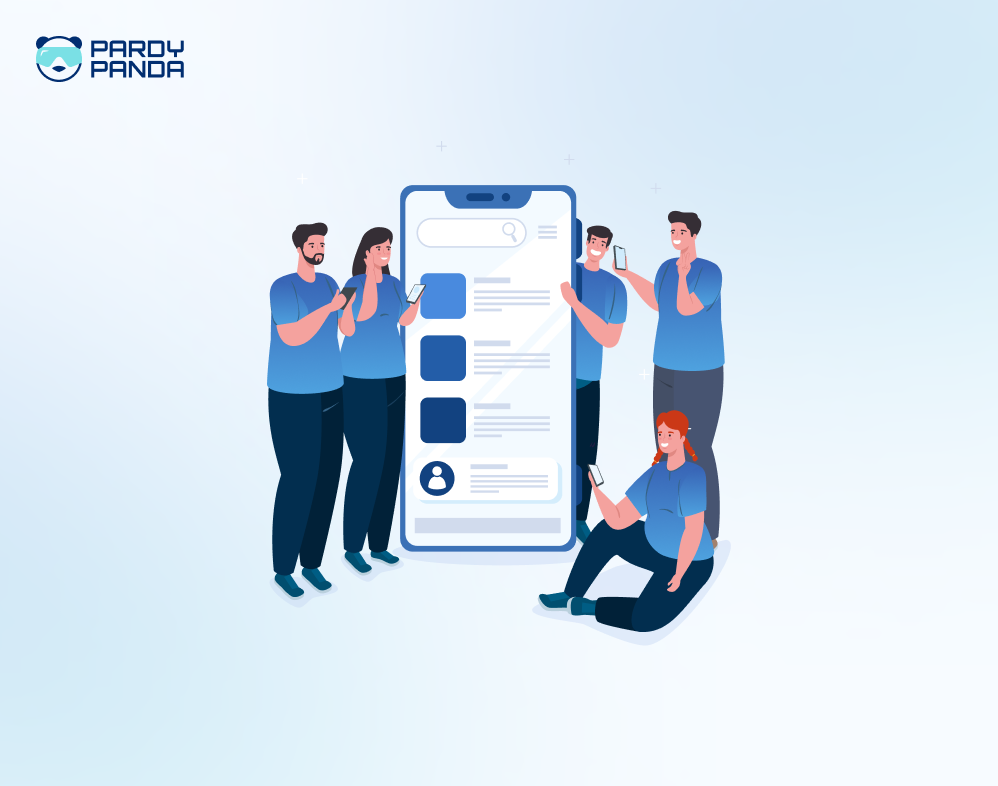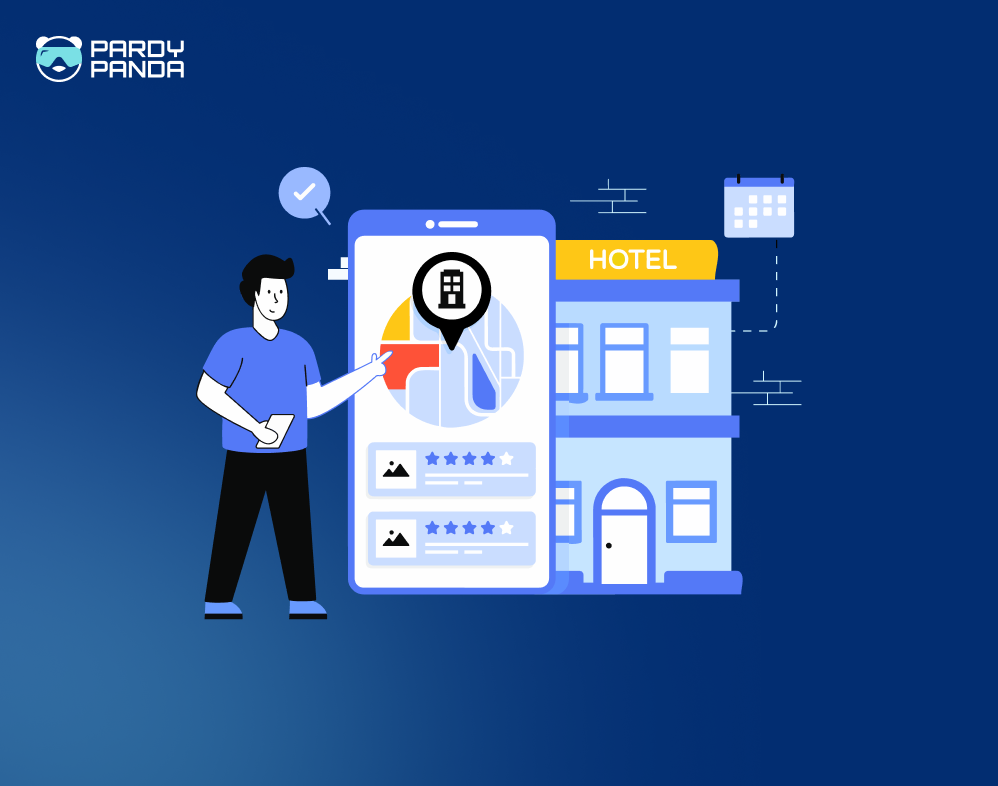Getting to your first 1,000 active users feels like validation. But growing to 1 million? That’s a different game. Most founders stall because tactics stop working, acquisition gets expensive, and retention leaks compound. Scaling isn’t accidental, it’s engineered. Let’s break down the architecture of apps that grow reliably.
1. Validate Product–Market Fit (Before You Step on the Gas)
Scaling a leaky product doesn’t make it better. It just increases churn faster. Before aggressive growth, validate that your product is pulled into the market.
Signals of product–market fit:
- Organic sign-ups from referrals
- Users coming back without reminders
- High usage frequency (daily/weekly)
- Support tickets asking for more, not fixes or broken workflows.
A tip:
If your retention curve drops to near-zero after week 4, you’re not ready for paid marketing. Fix onboarding, core value delivery, and friction first.
2. Build Growth Loops (Not Funnels)
Funnels are linear. Loops compound.
The fastest-scaling apps, Tinder, Notion, Duolingo, grow through loops where every new user drives another.
Examples of growth loops:
- Referral credits (Uber)
- User generated content indexed by search (Notion public pages)
- Collaboration invites (Figma)
How to apply?
Design one loop tied to your core value, not discounts. If the loop breaks, your growth stalls.
3. Nail Your Onboarding Experience
You don’t have minutes. You have seconds.
A user’s first session decides retention. Simplify onboarding until it feels “inevitable” to continue.
Checklist:
- Reduce steps to activate value
- Show benefits, not features
- Use progressive disclosure (show complexity later)
- Guide one “Aha!” action
For Example:
Duolingo doesn’t show you settings, badges, or streaks. It throws you into a lesson → instant competence → dopamine → retention.
4. Prioritize Retention Over Acquisition
Retention is the invisible growth multiplier. A 5% retention boost can unlock hundreds of thousands of users without increasing spend.
Metrics that matter:
- DAU/MAU ratio
- Cohort retention
- Max drop-off points
- Time to value (TTV)
Practical win:
Match your notification strategy to key usage behavior, not generic nudges.
5. Multi-Channel Acquisition (Avoid Dependency)
Founders often rely too heavily on one channel (LinkedIn, IG ads, Meta ads). When CPM spikes, growth dies.
Diversify early:
- SEO content with intent
- Performance ads
- Partnerships
- Influencer micro-campaigns
- Community-driven growth
For example:
If you’re building a fitness app, partner with gyms or trainers. Let them invite their audience → instant trust.
6. Use Data, Not Opinions
At 1,000 users, “I think…” is fine. Past 10,000, opinions become expensive.
You need:
- Dashboard tracking real behaviors
- Event tagging
- Cohort analytics
- Heatmaps
Find the bottleneck:
Growth almost always dies from:
- Poor onboarding
- Bad activation
- Weak retention
Fix the bottleneck, then scale.
7. Scale Architecture Early Enough
Don’t wait until your servers scream.
As usage climbs:
- Latency hurts conversions
- Downtime kills trust
- Bugs compound churn
Modern scalable architecture and reliable CI/CD pipelines protect your growth velocity.
Explore custom app development & scalable architecture with the Pardy Panda Studios team.
8. Build a Community Around Your Product
Community creates:
- Stickiness
- Emotion
- Identity
People stay for people.
Places to build:
- Discord/Slack groups
- In-app forums
- Ambassador programs
- Beta access communities
For Founders:
Community is your defensive moat when ads get expensive.
9. Introduce Virality by Design
Virality is not luck.
You must embed shareability into the product experience.
Tactics:
- Social proof badges
- Shareable achievements
- Incentivized referrals
- Collaborations and duets (TikTok-style)
Aim for a viral coefficient of >1 at moments of emotional peak.
10. Optimize Pricing for Scale
Many apps plateau because pricing doesn’t encourage growth.
Try:
- Tiered pricing to grow with users
- Freemium → paid paths
- Usage-based pricing (SaaS-friendly)
- Team-based pricing (Figma genius move)
Pricing should unlock adoption, not block it.
11. Double Down on Lifecycle Marketing
Your CRM should be a living system.
Use:
- Email sequences
- In-app nudges
- Personalized milestone notifications
Lifecycle marketing is the quiet engine behind apps that keep users for years.
12. Protect User Experience Ruthlessly
At scale, complexity tries to creep in.
Say no to:
- Feature bloat
- Confusing UI
- Unnecessary steps
Ask: “Would this confuse a first-time user?”
Make someone go, “That was easy.”
Summary Playbook (Bookmark This)
To reach 1M users:
- Validate product–market fit
- Engineer growth loops
- Nail onboarding to first value
- Optimize retention relentlessly
- Diversify acquisition channels
- Build a data-driven culture
- Ensure scalable architecture
- Foster community
- Embed virality
- Position pricing for expansion
Scaling is compounding, so work towards tiny improvements stacked weekly.
Ready to Scale Without Burning Budget?
If you’re serious about going from 1,000 to 1,000,000 users, you need a product, architecture, and growth engine built for scale.
Book a strategy call with Pardy Panda Studios.
Let’s build the app people can’t stop using.
Not just one they download and forget.
FAQs
How do I know if my app is ready to scale?
Look at retention curves, activation rates, and organic acquisition. If users churn fast, fix before scaling.
What’s better - paid ads or organic growth?
Both. Paid ads accelerate what’s already working. Organic growth keeps CAC sane long-term.
How long does it take to reach 1M users?
6–36 months for most apps, depending on product category, virality, and retention.
Should I build community early?
Yes. Community reduces churn and improves feature feedback quality.





